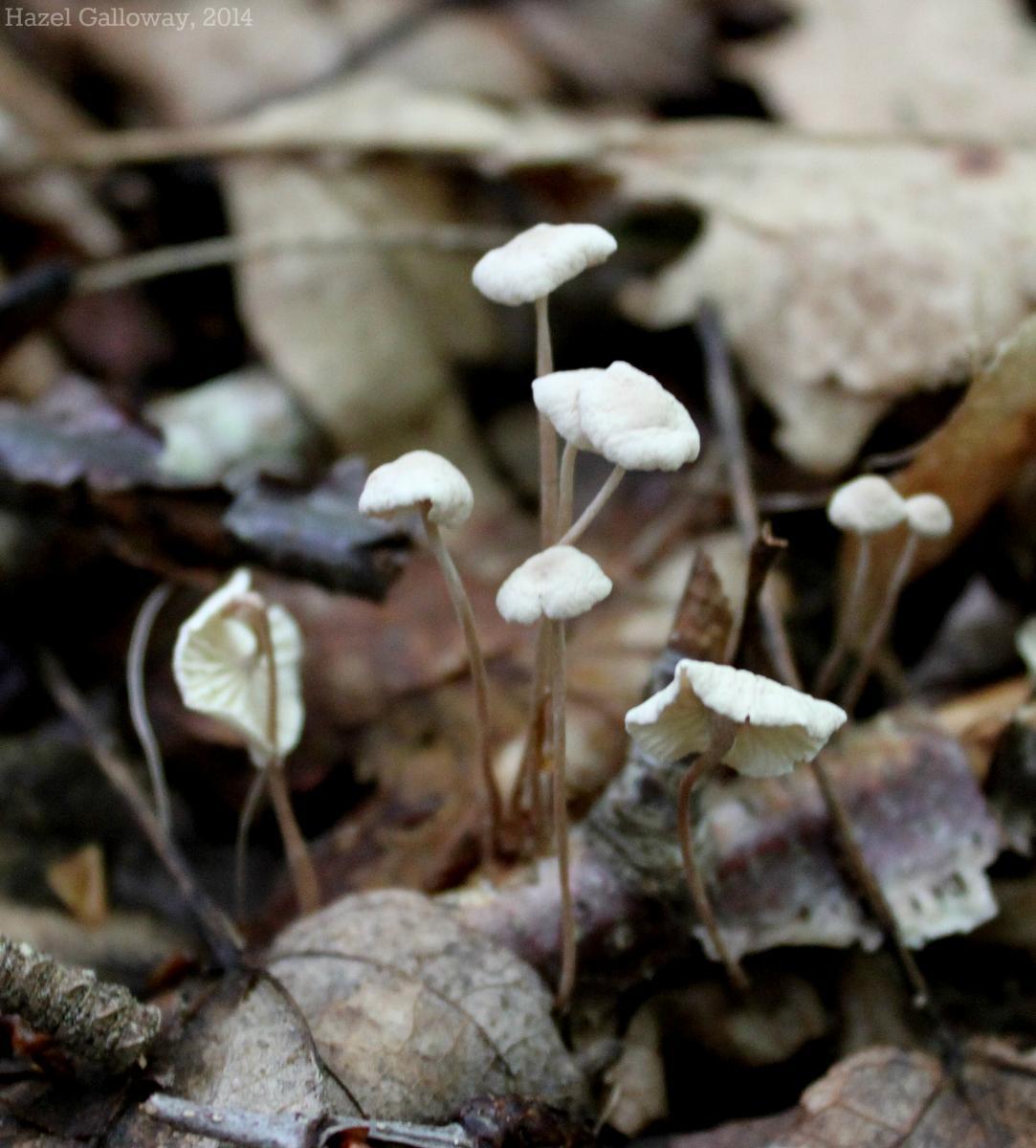This tiny mushroom is one of several species given the common name of the pinwheel mushroom. The specific name rotula, sharing a root with “rotation” and “rotunda,” also evokes the shape of a wheel, which becomes apparent when the mushroom is viewed from the underside. M. rotula has widely-spaced and distinct gills, which are attached to a minute collar encircling the stalk on mature caps. The white- to-cream-colored pleated caps reach a maximum of two cm in diameter, and typically develop a small, navel-like depression in the center of the upper side. While the thin stems of very young fungi are pale, they become dark and wiry in appearance as the mushroom ages. Like most mushrooms, M. rotula is saprobic on decaying organic matter. It is most often found in clusters or rows on dead, deciduous branches, twigs, and roots; this can be an important identifying characteristic, as similar species grow on leaf litter instead.

These mushrooms are often overlooked not only because of their size, but because of their proclivity to shrivel up in dry conditions and go totally unnoticed in the leaf litter. They can fully dry out over the course of a day, apparently dead, and then completely recover their original appearance in just a few minutes when submerged in water. The image above left was taken after rain; below right, at around noon of the following day. This peculiar property was named “marcescence” by Elias Magnus Fries, a well-known mycologist of the 1800s. Although its purpose has not been fully explained, it is possible that this adaptation for resistance to dry spells also serves to maximize spore release when conditions are most favorable for spore germination.
M. rotula was originally classified in the genus Agaricus, along with most other gilled mushrooms. Fries, who moved it to the genus Marasmius in 1838, also named it the ‘type species’ of its genus—the species to which the genus name is permanently tied and on which the description of the genus is based. If any taxonomic revision occurs or if the genus is divided, the type species is part of the group which retains the original genus name.
M. rotula can be found over most of North America east of the Rocky Mountains. On the west coast, they are replaced by the very similar species M. candidus. These fungi were found on the Dolinger property behind the waste-water treatment plant.
